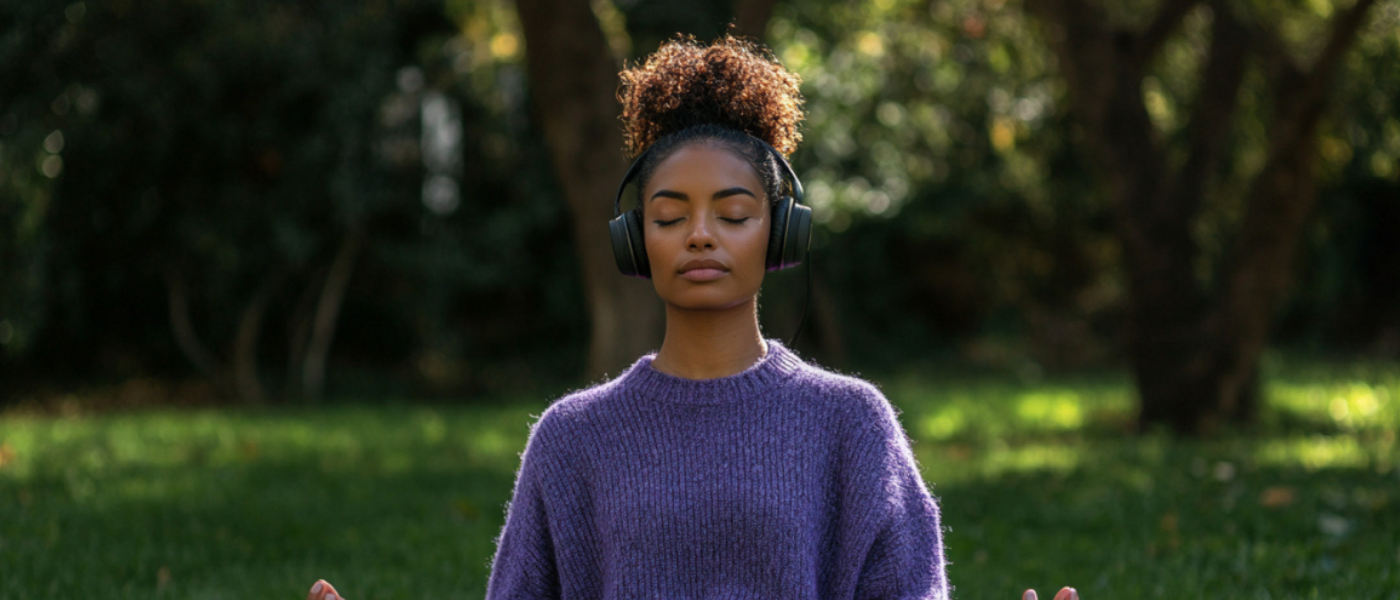Healing through trauma Informed Breathwork

What is trauma and trauma Breathwork?
Honestly, the first time someone suggested I try “breathwork” to heal my emotional trauma I thought, “Breathing? Really? I mean, isn’t that something I already do every single day?” Turns out, there’s a huge difference between regular breathing and intentional, trauma informed breathwork exercises aimed at healing trauma.
So, what exactly is trauma? At its simplest, trauma is a deeply distressing or disturbing experience—something so intense it overwhelms our natural ability to cope. It’s surprisingly common, yet many of us (myself included, initially) underestimate how deeply trauma can affect our mental health and physical well-being.
Trauma breathwork is a therapeutic practice that intentionally uses conscious breathing techniques to help release trauma stored within the body. The therapeutic benefits of conscious breathing for healing trauma are significant, as it helps process and release past traumas. At first, the idea of trauma being “stored” in my physical body seemed abstract, almost unbelievable. But after my first breathwork session, I quickly realized how real this phenomenon is.
When practicing trauma breathwork, you’re guided through specific breathing exercises and patterns designed to release pent-up emotions, stress, and tension. To be honest, my first session wasn’t pretty—there were tears, discomfort, and even a bit of confusion. But afterward? A sense of relief so profound, I couldn’t deny something important had shifted.
Breathwork doesn’t magically erase trauma (trust me, nothing does), but it can genuinely help you process and integrate difficult experiences. For anyone skeptical (as I definitely was), all I can say is: don’t underestimate the simple power of intentional breathing.
Breathing techniques for trauma healing

Alright, let’s get into the specifics—because the first question I had after hearing about trauma breathwork was, “What exactly do I do?” Turns out, there’s not just one method. Honestly, at first, this felt overwhelming. Multiple techniques? Couldn’t there just be one, easy option?
But soon I discovered something great: having options means you can find a method that genuinely resonates with you. Here are a few techniques I explored, each offering unique experiences:
Holotropic Breathwork
Holotropic breathwork involves rapid, rhythmic breathing designed to shift your consciousness. Developed by Dr. Stanislav Grof, this technique aims to move individuals towards wholeness. At first glance (or first breath?), it sounded intense—and to be real, it is. Holotropic breathing can help with conditions like post traumatic stress disorder (PTSD), particularly in cases involving U.S. military veterans. During my session, I started breathing rapidly, feeling awkward and self-conscious. But surprisingly, after a few minutes, reality faded slightly and emotions I’d suppressed came flooding up. I wasn’t prepared for the tears (or honestly, the tissues I’d need afterward).
Biodynamic Breathwork
Then there’s biodynamic breathwork—a holistic method that combines breathing, movement, sound, touch, emotional expression and meditation. Honestly, this method caught my attention because it felt like a complete emotional detox. One funny thing happened—I started giggling mid-session, completely unexpectedly. Turns out, emotional release can also mean laughter!
Wim Hof method
The Wim Hof Method became famous through “The Iceman,” Wim Hof. It involves deep, oxygen-rich breaths that change your heart rate and stress response. Admittedly, I tried it mostly out of curiosity (and maybe a bit of skepticism). The breathing was intense—my head felt dizzy initially, but afterward, I felt a sense of clarity and calmness I hadn’t anticipated.
Somatic experiencing
Finally, somatic experiencing focuses on releasing physical tension caused by trauma. I loved this method because it didn’t feel intimidating. Instead, it gently guided me to notice bodily sensations and to slowly let go of the tension I’d been unknowingly holding for years.
Honestly, it took experimenting with a few methods before finding what worked best for me. There’s no perfect technique—just the one that resonates with you.
The science behind trauma breathwork

If you’re anything like me, the first thing you wonder when someone says, “Breathing can heal trauma,” is probably something like, “Okay, sounds cool—but what’s the actual science behind this?” Honestly, I was skeptical at first. Breathwork seemed a bit too simple to be genuinely transformative. But after diving into the science, I had one of those “aha!” moments.
Here’s the deal: trauma isn’t just a mental or emotional event—it’s physiological. When we experience trauma, our bodies react intensely, flooding us with stress hormones like cortisol and adrenaline. These hormones activate the “fight or flight” response, often leaving behind tension, unresolved emotions and even physical pain. Trauma breathwork works because it directly engages your autonomic nervous system (that’s the part controlling involuntary actions like heartbeat and digestion). By changing breathing patterns, you can shift out of a stressed “fight or flight” state and into the calming “rest and digest” mode. Activating the parasympathetic nervous system through breathwork facilitates the relaxation response. It’s like hitting a reset button on your sympathetic nervous system.
Then there’s the vagus nerve—something I’d never heard of until I started breathwork. This nerve runs through your diaphragm and connects directly to your brain, making it super sensitive to your physical movements and breathing patterns. Certain breathwork techniques stimulate the vagus nerve, promoting relaxation and helping release emotions trapped in the body. At one point I thought, “Wow, my breathing actually controls all this?”
There’s also the emotional catharsis aspect. Breathwork helps access memories or feelings stored subconsciously. When I experienced this, it felt surprising—like finally finding the missing piece to a puzzle I’d been struggling with for years.
To be honest, knowing the science made me feel safer, calmer and less skeptical about breathwork as a trauma-healing practice. It’s not magic—it’s biology. (Okay, maybe it’s a little bit magical, too.)
Safety considerations for trauma Breathwork

Before we get started, let’s talk safety—because I’ll be real, trauma breathwork can get pretty intense. I went into my first session a bit naively thinking, “It’s just breathing, how intense could it possibly get?” Well, spoiler alert: pretty intense.
First things first—always consider your personal health conditions. Breathwork techniques involving rapid or deep breathing might not be suitable for everyone. Conditions like high blood pressure, heart issues, pregnancy, epilepsy or recent surgeries can pose risks. I remember being mildly surprised when the practitioner asked about my mental health conditions and history before our session. At first I brushed it off as being overly cautious but later I realized how important these precautions were.
Another key point: never underestimate the emotional depth of breathwork. During my sessions deep-seated emotions surfaced—often unexpectedly. It’s like opening an emotional floodgate. Having an experienced, trauma-informed practitioner guiding me through this made all the difference. Honestly, I can’t imagine navigating some of those emotions alone.And speaking of practitioners—make sure you choose someone skilled and certified. Do a bit of research first, because trust me, the quality of guidance matters. The practitioner I worked with gently guided me when difficult emotions surfaced and created a safe, judgment-free space. At one point when old feelings of anxiety surfaced unexpectedly their calm reassurance was everything.
Finally, know your limits. Breathwork isn’t about pushing through intense discomfort blindly—it’s about gentle release. If things feel too overwhelming it’s perfectly okay to pause or stop. I learned the hard way (typical me) that respecting my own boundaries actually made the process more powerful not less.
Safety isn’t about fear—it’s about creating a supportive environment where healing can truly happen.
Releasing trauma through Breathwork

Okay, this is where things get real—let’s talk about actually releasing trauma through breathwork. Honestly before I tried it myself the idea of physically releasing emotional trauma through controlled breathing just sounded… far-fetched. I remember thinking “Wait, you mean my body can just let trauma go? Like, physically?” Turns out it can—and it’s pretty amazing.
A trauma release system, like biodynamic breathwork and trauma release exercises (TRE), can help clear emotional and physical blockages. These techniques aim to facilitate healing through body movements, breath patterns circular breathing, and natural tremor responses, ultimately promoting emotional and physical well-being.
Trauma as I discovered firsthand isn’t just stored emotionally or mentally. Our bodies hold onto these traumatic events and experiences too often manifesting as chronic tension, headaches, tightness in the chest, anxiety or unexplained pain. When I started breathwork the first thing I noticed was how physical my emotions felt. Tears, shaking, tingling—initially I was a bit startled even embarrassed by these reactions.
One popular method is TRE (Trauma Release Exercises) which encourages your body’s natural tremor response deep relaxation. My first TRE session was weird—lying on a mat my legs involuntarily shaking like jelly. But weirdly enough afterwords I felt a deep sense of relief almost as if a heavy backpack had finally been removed. I swear I wasn’t the only one struggling with self-consciousness at first—until the collective relief kicked in and suddenly it felt completely natural.
Other breathwork methods help release trauma by accessing subconscious memories and emotions. During one intense session childhood memories surfaced unexpectedly and yes it was emotionally overwhelming—but also incredibly cathartic. At one point I caught myself thinking “I didn’t even realize I was still holding onto this.” The first physical effects of release felt tangible, undeniable and honestly pretty profound.The biggest surprise for me was realizing releasing trauma doesn’t always mean dramatic emotional breakthroughs. Sometimes it’s subtle—like gradually feeling lighter, calmer or less reactive to stress over time. But no matter how it happens breathwork genuinely has the power to help you release deep-seated pain you’ve been unknowingly carrying around.
Integrating Breathwork into therapy and healing

One of the most important things I’ve learned from my journey with breathwork is this: breathwork is powerful but it’s not a magic fix-all. At first I had high expectations—maybe even unrealistic expectations. I hoped breathwork would instantly solve years of emotional buildup. Spoiler alert: it didn’t (at least not entirely).
What it did do was create space for deeper healing. Breathwork opened emotional doors that other therapies hadn’t fully reached. When combined with more traditional therapy, talk therapy, somatic experiencing or other healing modalities it felt like the perfect puzzle piece clicking into place.
I found talk therapy especially helpful after intense breathwork sessions. It gave me space to process those sudden sometimes overwhelming emotions that emerged. Without integrating these insights through conversations or journaling afterwards I might have missed their significance or felt lost in their intensity.
Working with a qualified therapist or breathwork practitioner who understood trauma became essential for trauma recovery. Early on I underestimated this. My “do-it-yourself” approach worked fine initially—until I hit deep emotional layers. At that point having guidance from someone trained in trauma-informed care was invaluable. Honestly having professional support turned potential overwhelm into genuine healing breakthroughs.
Integration also meant giving myself permission to rest. Post-breathwork I initially felt pressure to “keep going” as if healing needed constant action. But I learned healing is cyclical—sometimes it’s active breathwork sessions and sometimes it’s simply resting, processing and reflecting. Trust me there’s nothing wrong with taking a gentle pace.
Ultimately breathwork beautifully complements other therapeutic methods, enhancing their effectiveness. It’s not about choosing specific breathwork techniques or therapy—it’s about combining them for deeper lasting emotional healing.
Personal testimonies and success stories

I don’t know about you but whenever I’m considering a new healing practice I go straight to the testimonials. I mean nothing speaks louder than real people sharing real experiences right? Breathwork thankfully comes with plenty of those stories—mine included.The first testimonial I heard about trauma-informed breathwork made me a little skeptical. Someone described feeling a sudden profound release of grief they’d carried since childhood. I thought, “That sounds amazing—but also too good to be true.” Fast forward to my own experience and I found myself ugly-crying mid-session completely relating to that story. Funny how skepticism quickly turned into empathy.
Another friend of mine a former skeptic turned breathwork enthusiast described her first experience as lifting “a thousand-pound weight” off her chest. She said it was as if all the stress she’d silently accumulated finally found an escape route. Her description stuck with me because honestly I had felt something eerily similar.
Not every testimonial is dramatic though. Sometimes breathwork’s impact is subtle yet deeply transformative. One person shared that consistent practice simply made her feel less reactive—less quick to anger less overwhelmed by daily stress. I related hard to that too. Breathwork didn’t make my life instantly perfect but it definitely softened my edges reducing anxiety and emotional reactivity over time.
Then there’s the lighter side. A fellow breathwork participant once told me laughing that he initially felt ridiculous breathing loudly and dramatically in a room full of strangers—until it actually worked. “Okay so funny thing happened” he confessed “I went from doubting everything to feeling incredibly calm in minutes.” I laughed because honestly that was my exact experience too.
Personal stories reveal one beautiful truth about breathwork: no matter how different each journey looks the common thread is genuine emotional healing and release. If these testimonials taught me anything it’s that skepticism is totally normal but openness can lead to genuinely life-changing moments.
Finding a qualified Breathwork practitioner or therapist

Finding the right breathwork practitioner was like online dating—exciting, hopeful and honestly, a little nerve-wracking. I thought, “How hard can it be? Just breathe, right?” Turns out it matters who is guiding your breathwork journey especially when trauma is involved.
First things first: always check credentials. Look for practitioners specifically trained in trauma-informed breathwork. I admit, at first I underestimated this step—thinking experience wasn’t a big deal. But after one particularly intense session with an inexperienced facilitator, I quickly realized credentials aren’t just nice to have; they’re essential.
I eventually found someone certified in trauma-informed breathwork with solid experience guiding others through emotional releases. My first meeting with her felt reassuringly safe, professional and empathetic. She asked questions about my emotional and physical history which immediately made me feel respected and safe—something that’s super important when dealing with trauma.
Another piece of advice? Pay attention to their approach. Does the practitioner resonate with your personal values and communication style? I met with a few practitioners before finding one whose style felt genuinely comfortable. Trust your instincts; feeling safe and supported matters a lot.
It’s also helpful to read reviews or get recommendations from trusted friends or therapists. Hearing about others’ positive experiences gave me the confidence to take that first step. A friend once told me her breathwork facilitator handled her emotional release with gentle compassion which immediately encouraged me to book a session myself.
Lastly, remember you’re never obligated to continue if things don’t feel right. Breathwork is personal and your comfort matters. There’s no shame in trying a different practitioner until you find your perfect match. It took me a few tries but when I finally found my facilitator the experience felt undeniably right.
Finding the perfect practitioner might take a little patience but trust me it’s worth it for the emotional safety and deep healing you’ll experience.
Overcoming common challenges in trauma Breathwork
Okay, let’s get real about something important—breathwork isn’t always smooth sailing. When I first started I naively assumed I’d breeze through each session, perfectly calm and gracefully releasing all my trauma. Spoiler alert: reality was messier—and honestly, way more relatable.One of the first challenges I faced was resistance. During intense breathwork sessions I would sometimes dissociate or mentally check out. At one point I caught myself thinking, “Is this even working? Am I doing it wrong?” Turns out this is common especially with trauma. Our brains instinctively want to avoid discomfort. Thankfully a trained practitioner gently reminded me that resistance is natural—and working through it, not around it, is what breathwork is about.
Another hurdle? Feeling emotionally overwhelmed afterwards. Breathwork can bring up emotions that have been suppressed for years—emotions you may not be fully prepared to face. After one session I felt unexpectedly raw and vulnerable and honestly a little shaken. Thankfully integrating those emotions through journaling or gentle self-care afterwards helped immensely. It’s okay (and actually necessary) to give yourself space to recover after intense emotional releases.
Physical reactions were another surprise. At times my body would feel shaky or tingly during sessions which initially startled me. I learned those sensations were signs of energy releasing from trauma stored in my muscles. Having a practitioner guide me through that physical release turned potential fear into actual healing.
And let’s not forget fear of judgment or embarrassment. In one early session I cried uncontrollably in front of strangers. Embarrassing? Absolutely. But guess what? Nobody judged—because everyone was dealing with their own messy emotions. Realizing that made me feel surprisingly free.
Breathwork isn’t about perfection. It’s about accepting messy emotions, imperfect sessions and occasional awkward moments as part of real healing. So yeah, it’s challenging—but those challenges actually make the practice richer, deeper and more transformative.
Conclusion and next steps
If there’s one thing I’ve learned from trauma-informed breathwork it’s that healing is messy, imperfect and human. Honestly when I first started this journey I had no idea how powerful something as simple as breathing could be. I mean breathing is something we literally do without thinking—who knew it could turn emotional distress and pain into actual healing?
Breathwork didn’t erase my own trauma almost overnight (trust me, nothing does). But it did offer an entry point—a way to approach, process and finally release emotions I’d unknowingly held for too long. And that’s powerful.So what’s next? If you’re feeling curious or inspired to try breathwork my advice is simple: take that first step. Find a qualified trauma-informed practitioner. Do some research. Book a session. And remember it’s totally okay to be skeptical or nervous. Honestly I was too.
Also remember breathwork is most effective when combined with other forms of healing like talk therapy, somatic experiencing or journaling. Healing is holistic—it’s not one-size-fits-all and breathwork is just one powerful tool among many.
And finally give yourself compassion and patience. Breathwork might open emotional doors you didn’t expect—let those doors open gently and give yourself plenty of grace as you navigate your own emotional landscape. Trust me it’s worth it.
If breathwork can help someone like me—initially skeptical, emotionally guarded and a little nervous—then imagine what it might do for you. Are you ready to breathe your way to healing?
FAQs
Not always. While breathwork is generally safe certain health conditions like pregnancy, high blood pressure, heart or cardiovascular disease,, epilepsy or recent surgeries might pose risks. Always consult a healthcare provider or qualified practitioner first.
Everyone’s experience varies. Some people (myself included) feel immediate relief after one session while others experience gradual changes over multiple sessions. Healing is personal so be patient and compassionate with your process.
It’s actually normal! Breathwork often brings up deep emotions. A skilled trauma-informed practitioner will guide you through those emotions creating a safe space for release. Remember it’s okay to pause or stop anytime.
Initially working with a qualified practitioner is highly recommended especially when dealing with trauma. Once you’re experienced and comfortable you can safely integrate simpler breathing exercises into your daily routine.
No, breathwork is most powerful when combined with other healing modalities like talk therapy or somatic experiencing. Think of breathwork as a powerful complement—not a complete replacement—for traditional therapeutic approaches.




